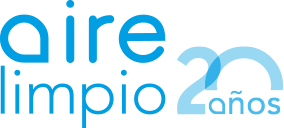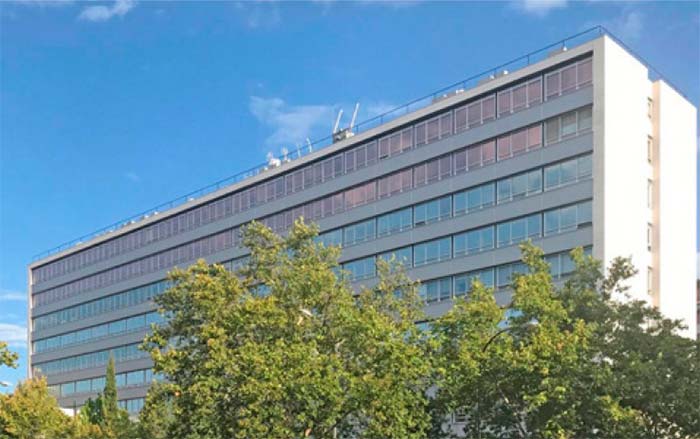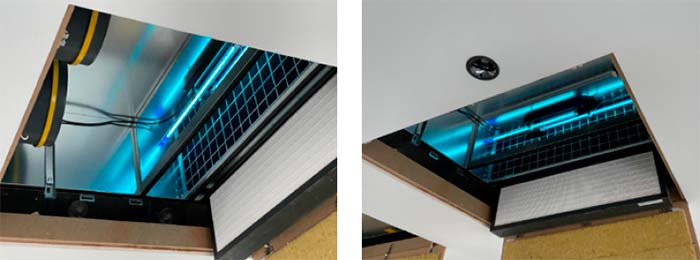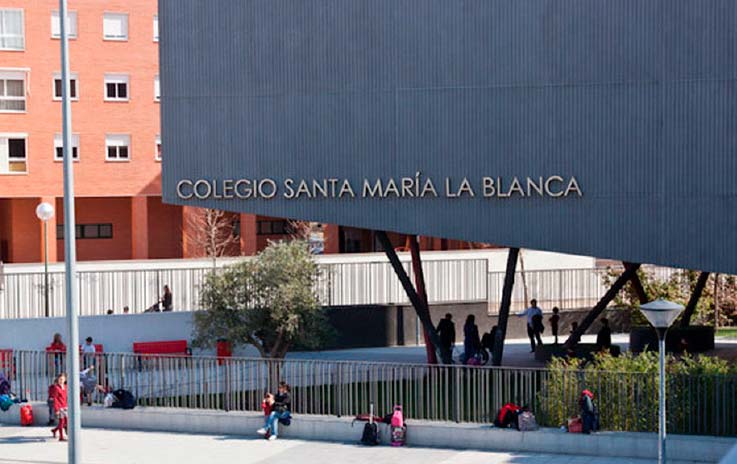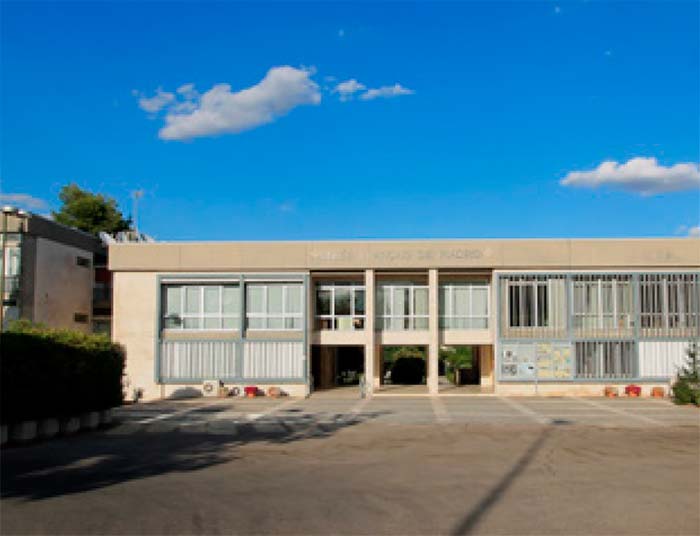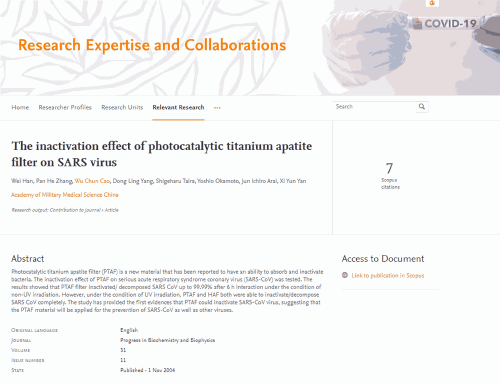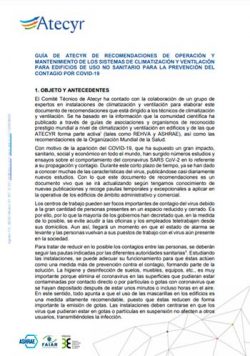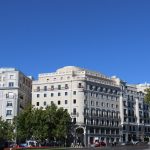Buildings as a preventive barrier against COVID-19
Situations like COVID-19 are not rare occurrences
In the last 17 years, there have been at least 6 outbreaks (including the current one) which have affected the world population (SARS, MERS, Avian Flu, ZIKA and EBOLA).
Measures to prevent the spread through aerosols
Highly valuable work can be done to prevent the impact of situations like COVID-19 by improving the indoor environmental conditions of office buildings.
The high likelihood of airborne transmission of SARS-CoV-2 requires airborne exposure to the virus to be controlled. The way in which buildings operate, including their air conditioning and ventilation systems, must be changed.
Pathogens are spread through the air by means of droplets and aerosols which are produced when we talk, cough, breathe, etc.
Gravity causes large droplets to fall and settle on surfaces; however, the smaller droplets remain in the environment and can infect other hosts. Infectious aerosols can spread through the building via air distribution systems.

ASHRAE recommends HEPA (High-efficiency particulate air) localised air purification units as Evidence Level A
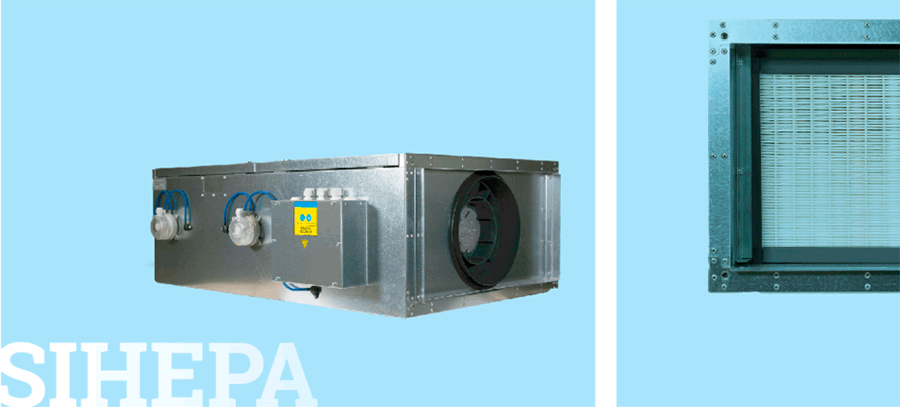
SIHEPA® Systems
INTEGRATED HEPA SYSTEM FOR THE ELIMINATION OF PARTICLES, MICROORGANISMS AND GASES
4 stages of filtration
Aire Limpio has SIHEPA® systems, which are purifying units with four stages of filtration:
- F7 pre-filter with antimicrobial treatment
- TiO2-coated ceramic activated carbon photocatalytic monolith
- UVGI ultraviolet germicidal light irradiation
- HEPA H13 filter with antimicrobial treatment
Optional
In addition to the four stages of filtration, the following are also offered:
- A control system accessed via a mobile app
- Airborne particle probe
- Combined air quality probe (VOCs + Particles + CO2
Characteristics
These systems improve indoor air quality by filtering and eliminating pollutants in the places where they operate, reliably preventing polluted air from entering into adjacent areas.
These units are particularly valuable in buildings in use or in projects, specifically for areas such as:
- High-occupancy-density areas
- Meeting rooms
- Canteens/vending areas
- Communal areas (lift landings, etc.)
They operate as stand-alone systems and are installed in false ceilings in high-occupancy-density areas.

Role
SIHEPA® systems have a flow range of 1,200 m3/h to 2,200 m3/h that can be used in several ways:
- As a highly efficient air purifier, installed in false ceilings for high-occupancy-density areas. In this mode we recommend 5/6 air movements per hour.
- As a ventilation system, optimising air conditioning costs by reducing the supply of primary air and the thermal load through ventilation.
- As a control system, with the use of the airborne particle and air quality probes (VOCs + Particles + CO2).
As an air purifier, pollutants are reduced immediately due to the combination of integrated filters.
In addition, it is especially effective with biological pollutants as the effect is closer to people and airborne particles (to which COVID-19-type viruses often become attached).
It is installed in any position in a false ceiling or wall.
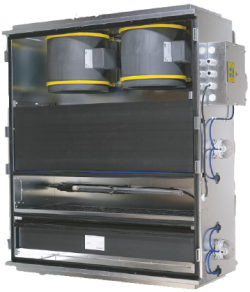
Technical data
| Model | PRE-FILTRATION | PURIFICATION | GERMICIDAL IRRADIATION | FINAL FILTRATION | FLOW (M3/H) | PRESSURE AVAILABLE (PA) | Consumo (w) | DIMENSIONS (HEIGHTXWIDTHXLENGTH) MM |
|---|---|---|---|---|---|---|---|---|
| AL12 | ePM2.5>90% (F9) | Ceramic Monolith TiO2-impregnated activated carbon |
UVGI 254 nm | HEPA 99,5% | 1.200 | 140 | 281 | 367 x 667 x 1.069 |
| AL22 | ePM2.5>90% (F9) | Ceramic Monolith TiO2-impregnated activated carbon |
UVGI 254 nm | HEPA 99,5% | 21.200 | 125 | 551 | 367 x 967 x 1.069 |
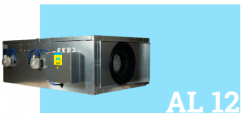
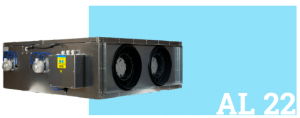
Examples of installations
Practical applications
Meeting rooms
Offices
Communal areas

Schools
Classrooms
Universities
Colleges
Churches
Cinemas
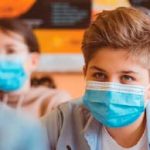
Waiting areas
High-occupancy-density areas
Auditoriums
Exhibition halls
Shopping centres
Business premises

Canteens
Vending areas

Árima

- Edificio Árima. María de Molina, 39. Madrid
- Instalación de equipos SIHEPA® en falso techo
OBJECTIVES AND DESCRIPTION
The Árima building, located in Madrid at C/ María de Molina, 39 is a 4,000-metre complex spanning 4 floors with 24 parking spaces. The goals of this project are to improve air quality and reduce the building’s energy consumption.
SIHEPA® Integrated Systems for the elimination of particles, microorganisms and gases are installed in line with improved indoor air quality and the building currently has the LEED® Gold certification.
| SIHEPA® INTEGRATED SYSTEMS | |
|---|---|
| Model | SIHEPA® |
| Nº of Units | 12 |
| Reduction in microbial load | >99% |
SIHEPA® SYSTEMS
Aire Limpio has assisted in the project by installing 12 SIHEPA® systems in the false ceiling. In addition to the benefits of improving indoor air quality, SIHEPA® systems make it possible to save on energy and maintenance.
WHICH VIRUSES AND BACTERIA DOES IT ELIMINATE?
| TYPE OF MICROORGANISM |
SFEG PHOTOCATALYTIC SYSTEM FOR THE ELIMINATION OF MICROORGANISMS AND GASES |
||||||||
|---|---|---|---|---|---|---|---|---|---|
| Pseudomonas aeruginosa | 99,9% | 99,9% | 99,9% | 99,9% | 99,9% | 98% | 98% | 98% | 98% |
| Avian Flu (Influenza A) | 99,9% | 99,9% | 99,9% | 99,9% | 99,9% | 98% | 98% | 98% | 98% |
| Campylobacter jejuni | 99,9% | 99,9% | 99,9% | 99,9% | 99,9% | 98% | 98% | 98% | 98% |
| Salmonella typhi | 99,9% | 99,9% | 99,9% | 99,9% | 99,9% | 98% | 98% | 98% | 98% |
| Legionella pneumophilia | 99,9% | 99,9% | 99,9% | 99,9% | 99,9% | 98% | 98% | 98% | 98% |
| Staphylococcus aureus | 99,9% | 99,9% | 99,9% | 99,9% | 99,9% | 98% | 98% | 98% | 98% |
| Vibrio comma (cholera) | 99,9% | 99,9% | 99,9% | 99,9% | 99,9% | 98% | 98% | 98% | 98% |
| MRSA | 99,9% | 99,9% | 99,9% | 99,9% | 99,9% | 98% | 98% | 98% | 98% |
| SPEED OF TRAVEL | 99,9% | 99,9% | 99,9% | 99,9% | 99,9% | 98% | 98% | 98% | 98% |
| E-coli | 99,9% | 99,9% | 99,9% | 99,9% | 99,9% | 98% | 98% | 98% | 98% |
| Klebsiella terrigena | 99,9% | 99,9% | 99,9% | 99,9% | 99,9% | 98% | 98% | 98% | 98% |
| Coronavirus (SARS) | 99,9% | 99,9% | 99,9% | 99,9% | 99,9% | 98% | 98% | 95% | 94% |
| Streptococcus faecalis | 99,9% | 99,9% | 99,9% | 99,9% | 99,9% | 98% | 98% | 95% | 94% |
| Hepatitis A | 99,9% | 99,9% | 99,9% | 99,9% | 99,9% | 98% | 98% | 95% | 94% |
| Agrobacterium | 99,9% | 99,9% | 99,9% | 99,9% | 99,9% | 98% | 98% | 95% | 94% |
| Bacillus anthracis | 99,9% | 99,9% | 99,9% | 99,9% | 99,9% | 98% | 98% | 95% | 94% |
| SPEED OF TRAVEL (m/s) | 0,50 | 1,00 | 1,50 | 2,00 | 2,50 | 3,00 | 3,50 | 4,00 | 4,50 |
|
Average air speed in Air Handling Units |
|||||||||
ADVANTAGES
Schools

- Colegio Santa María La Blanca, Madrid
- Lycée Français, Madrid
- Colegio Amorós, Madrid
Children are much more likely than adults to be adversely affected by indoor air pollution in buildings, and younger children are not as able to understand or clearly tell others about their symptoms.
Asthma, rhinitis and allergies are transmitted and viruses, etc. are spread as a result of poor or non-existent air purification. Moreover, many schoolchildren miss class due to illnesses. Clean and healthy air is an essential requirement in order for our children to thrive at school, given that air quality affects their cognitive development.
The concentration of SARS-CoV-2 in the air is reduced with the help of ventilation, air flows and filtration, and this therefore means there is less risk of airborne transmission. As an air purifier, biological and chemical pollutants are reduced immediately due to the combination of integrated filters and UVGI light eradication.
SIHEPA® SYSTEMS
Aire Limpio SIHEPA® systems operate as a powerful air purification tool with 4 stages of filtration.
They eliminate airborne particles such as microorganisms (viruses, bacteria, fungi and yeasts), as well as gases in the places where they are run, reliably preventing polluted air from entering into adjacent areas.
This technology has achieved several important credits in the BREEAM® and Verde® certifications.

ADVANTAGES
What does the scientific community say?
The link between poor air quality and the spread of COVID-19
8%
We found that an increase of 1 μg/m³ in PM2.5 is associated with an 8% increase in the COVID-19 death rate”
Conclusions:
A small increase in long-term exposure to PM2.5 leads to a large increase in the COVID-19 death rate.
Source: Xiao Wu et al, Exposure to air pollution and COVID-19 mortality, Harvard University 2020
Position Document on Infectious Aerosols

“The use of highly efficient particle filtration in centralised HVAC systems reduces the airborne load of infectious particles (Azimi and Stephens 2013). This strategy reduces the transport of infectious agents from one area to another when these areas share the same central HVAC system through supply of recirculated air. When appropriately selected and deployed, single-space high-efficiency filtration units (either ceiling mounted or portable) can be highly effective in reducing/lowering concentrations of infectious aerosols in a single space.”
“UVGI light inactivates microorganisms by damaging the structure of nucleic acids and proteins at the molecular level. The most important of these is deoxyribonucleic acid (which is responsible for molecular reproduction). An organism that cannot reproduce is no longer capable of causing disease. (Evidence Level A)”.
Strongly recommend; good evidence.
Recommend, at least fair evidence.
No recommendation for or against; balance of benefits and harms too close to justify a recommendation.
Recommend against; fair evidence is ineffective or the harm outweighs the benefit.
Evidence is insufficient to recommend for or against routinely.
The inactivation effect of photocatalytic titanium apatie on SARS Virus
Han Wei, Zhang Banhe, Cao Wuchun, Yang Dongling, Taira I, Okamoto Y, Arai JI, Yan Xiyun
“Photocatalytic titanium apatite filter (PTAF) is a new material that has been reported to have an ability to absorb and inactivate bacteria.
The inactivation effect of PTAF on serious acute respiratory syndrome coronary virus (SARS-CoV) was tested. The results showed that PTAF filter inactivated/ decomposed SARS-CoV up to 99.99% after 6 h interaction under the condition of
non-UV irradiation. However, under the condition of UV irradiation, PTAF and HAF, both were able to inactivate/decompose SARS-CoV completely. The study has provided the first evidences that PTAF could inactivate SARS-CoV virus, suggesting that the PTAF material will be applied for the prevention of SARS-CoV as well as other viruses”
Protocol for returning to buildings during the COVID-19 pandemic
Paulino Pastor, General Director of Ambisalud
“Install local air filtration and purification units, which are either fixed or portable units for temporary back-up. These units should preferably have HEPA grade filters, and it is recommended that they include UV lamps or even photocatalysis.
Select back-up purification units capable of treating sufficient air flow to obtain a significant number of indoor air movements per hour”.
Government recommendations

MINISTRY OF HEALTH, GOVERNMENT OF SPAIN
“It has been proven that poor ventilation poses a greater risk of airborne infection with the SARS-CoV-2 virus inside buildings. By studying facilities, we can adapt the way they operate to make them work as an additional preventive measure against infection, and thus become part of the solution.
We would emphasise the recommendation to increase the filtration of recirculated air, and if possible, using technologies with the lowest possible pressure drop. The use of UVGI ultraviolet light, widely known for inactivating all types of microorganisms, including viruses, is also advised. It is recommended to be used in batteries, or AHU ducts as an additional or complementary measure for surface maintenance.
In the case of premises that are difficult to ventilate well, the use of portable units equipped with high-efficiency HEPA filters is recommended in the areas to be treated. They must maintain a significant rate of hourly movements”
HVAC O&M recommendations guide for buildings to prevent the spread of COVID-19

ATECYR
HEPA filtration
This air filtration process is considered the standard for air purification and is highly efficient. It traps particles and does not release them into the air, therefore making it safe for all respiratory problems. Although it is difficult to integrate into existing equipment, some stand-alone systems are equipped with this type of filtration.
Ultraviolet germicidal light (UV-C)
This technology produces an invisible light that attacks pollutants by destroying their DNA instead of making them pass through a physical filter. This technology is proven to be effective, although it is only suitable for killing viruses, bacteria and germs. It does not eliminate airborne particles.
TiO2 photocatalysis
This technology, similar to that described above, does not filter the air, but only sanitises it through combining UV-C and a TiO2 catalyst that generates highly disinfectant reagents. It is extremely effective against pathogens, however it does not eliminate airborne particles. TiO2 photocatalysis is relatively easy to integrate into existing units such as ducts or AHUs, although it is also found in stand-alone systems.


